Empire Comfort Systems OP36FP32MN-2 User manual
Other Empire Comfort Systems Indoor Fireplace manuals
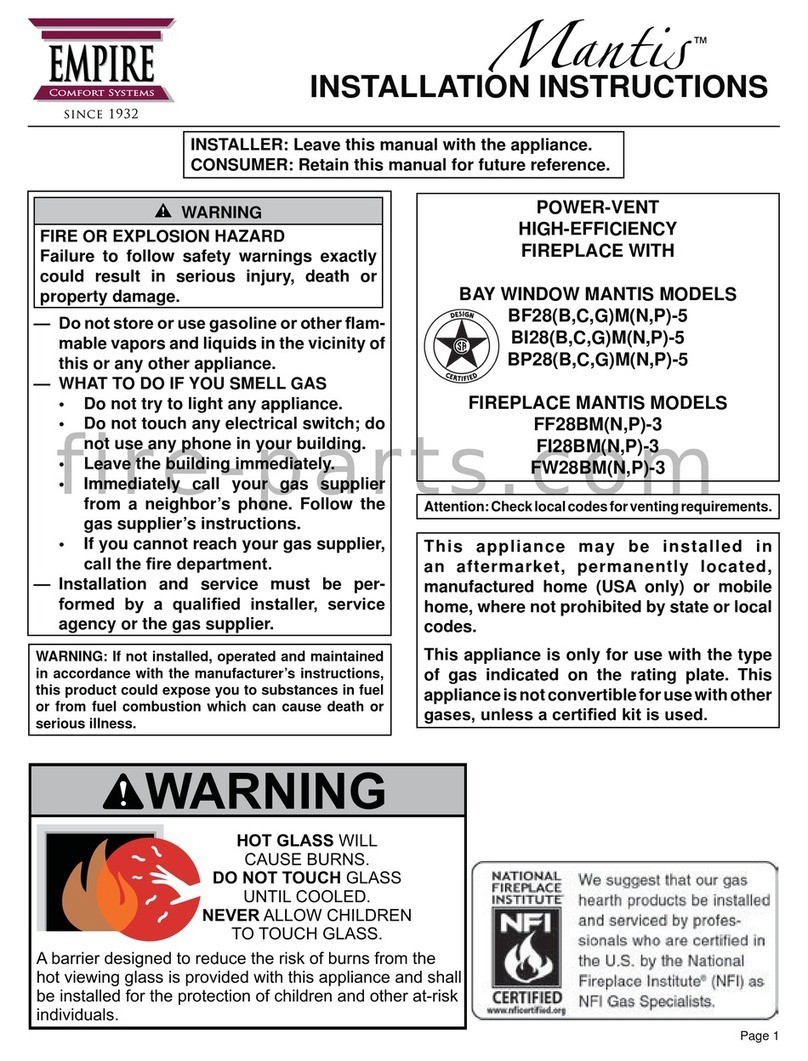
Empire Comfort Systems
Empire Comfort Systems Mantis Series User manual
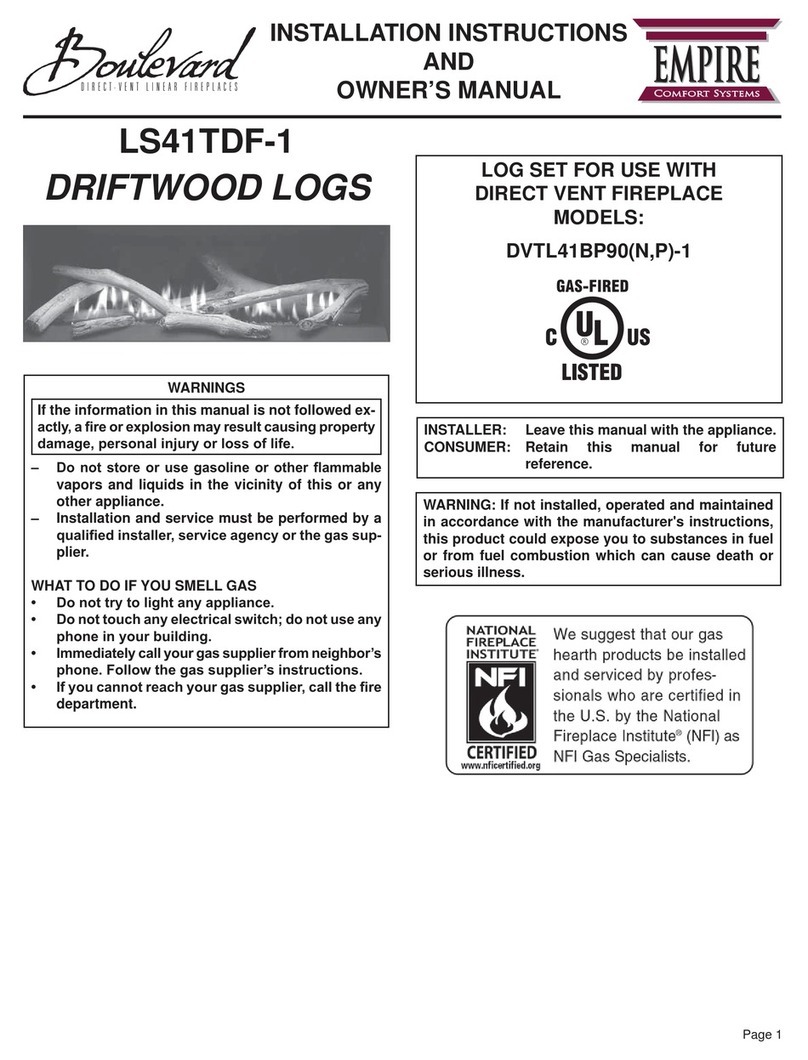
Empire Comfort Systems
Empire Comfort Systems Boulevard LS41TDF-1 Quick start guide

Empire Comfort Systems
Empire Comfort Systems DVP36FP3 series User manual

Empire Comfort Systems
Empire Comfort Systems DVF-36-3 Quick start guide
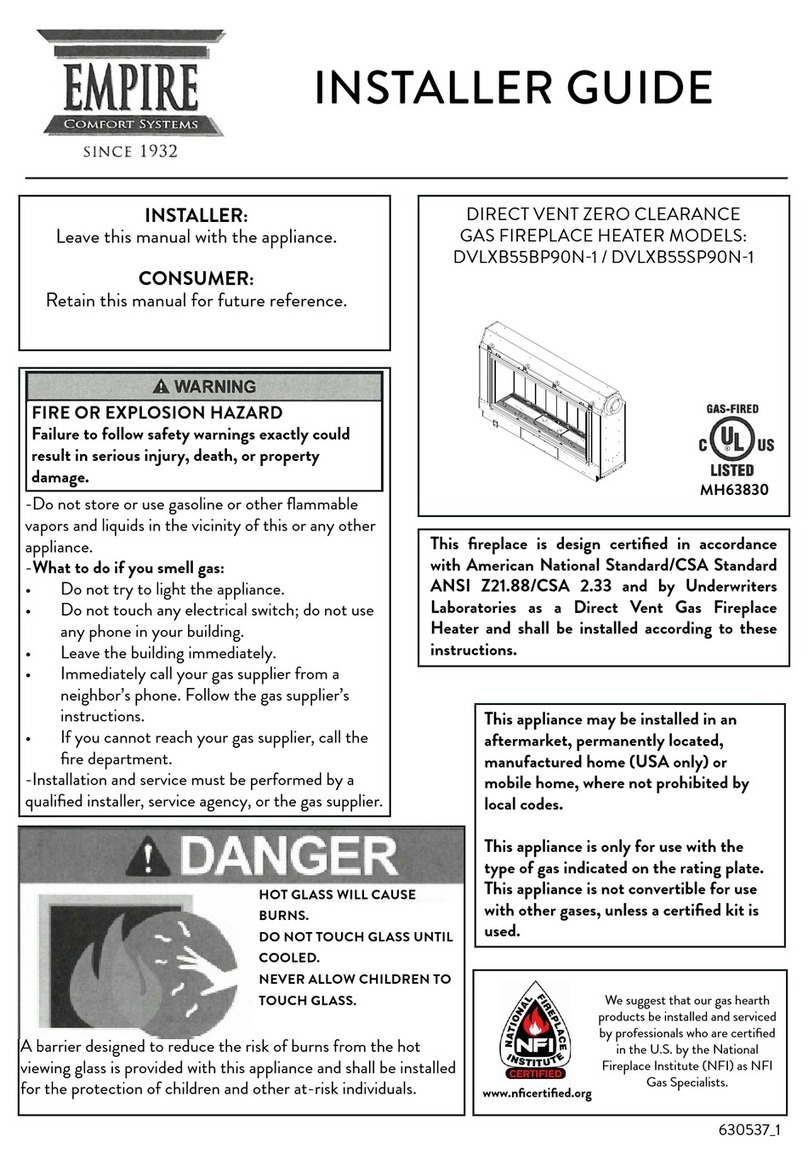
Empire Comfort Systems
Empire Comfort Systems DVLXB55BP90N-1 Assembly instructions
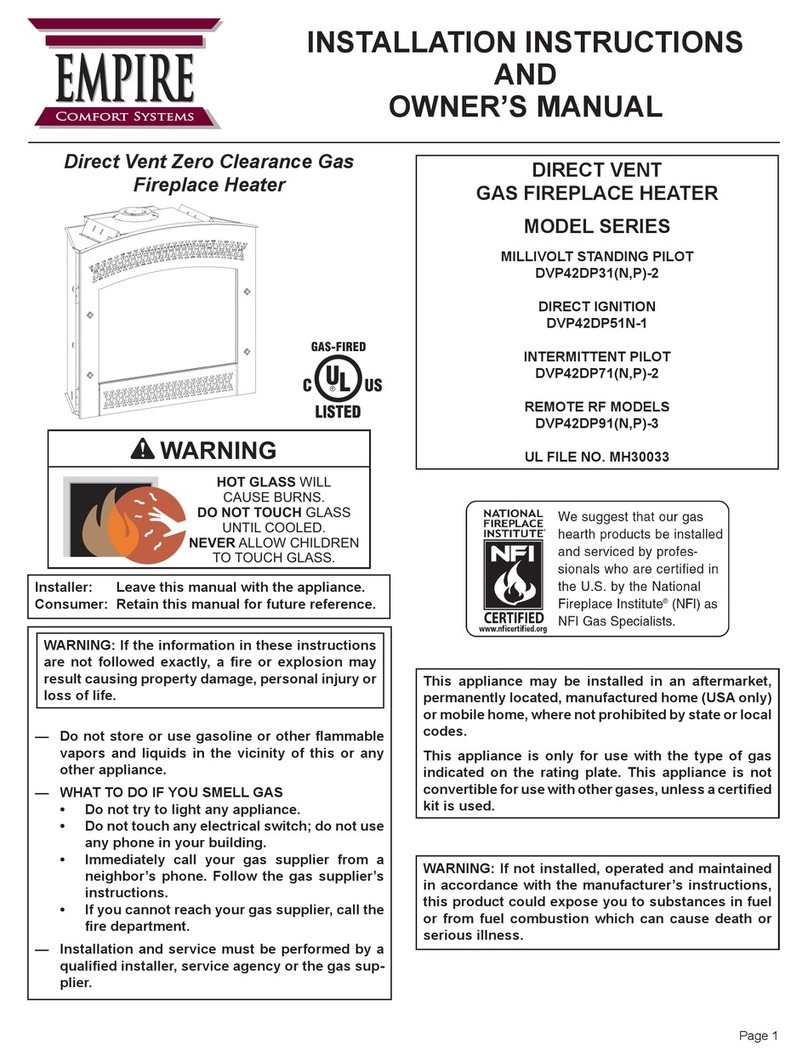
Empire Comfort Systems
Empire Comfort Systems DVP42DP31N-2 Quick start guide

Empire Comfort Systems
Empire Comfort Systems DVCT30CBN95N-2 User manual
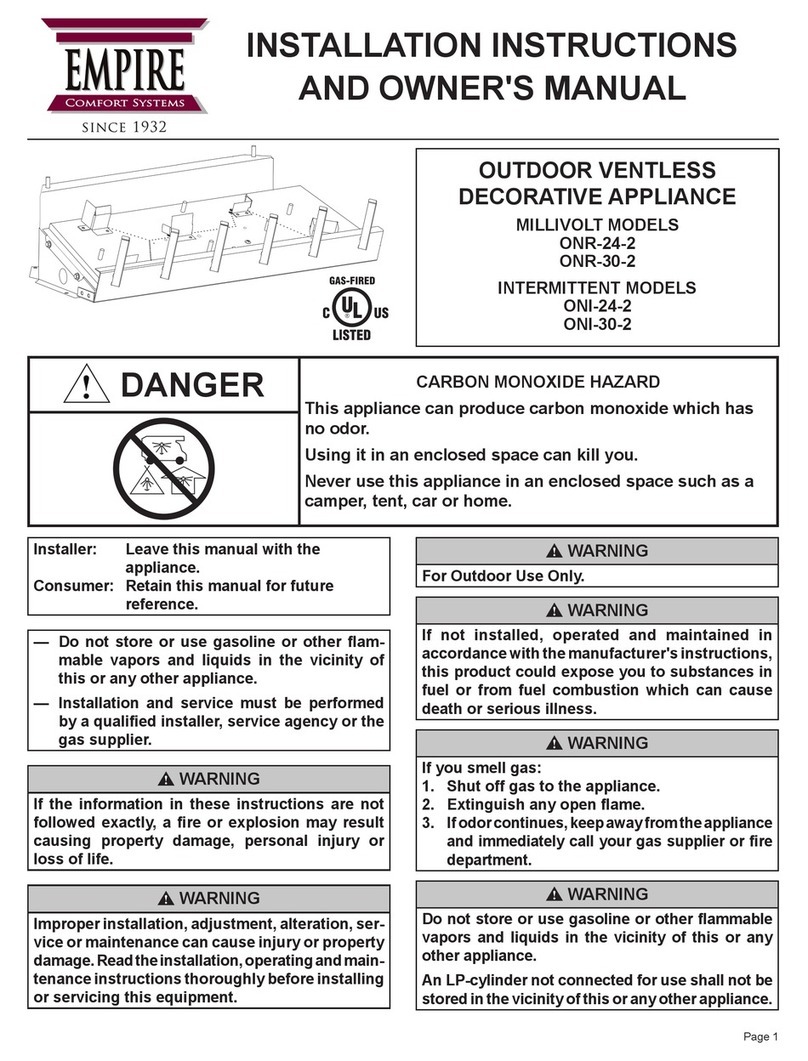
Empire Comfort Systems
Empire Comfort Systems ONR-24-2 Quick start guide
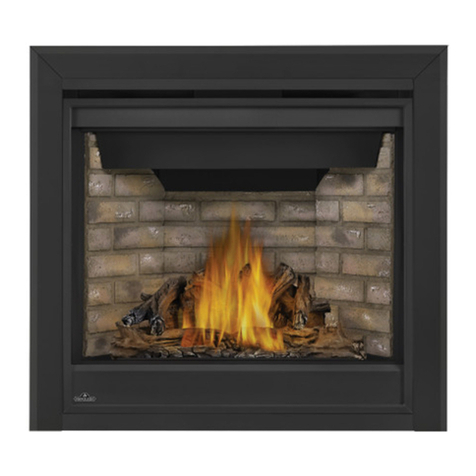
Empire Comfort Systems
Empire Comfort Systems DVCT36CBP95N-1 Planning guide
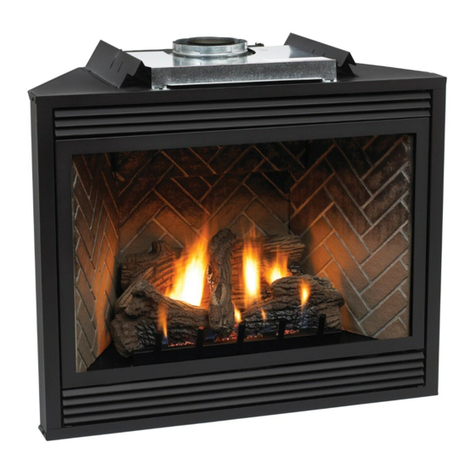
Empire Comfort Systems
Empire Comfort Systems DVP48FP30 Quick start guide
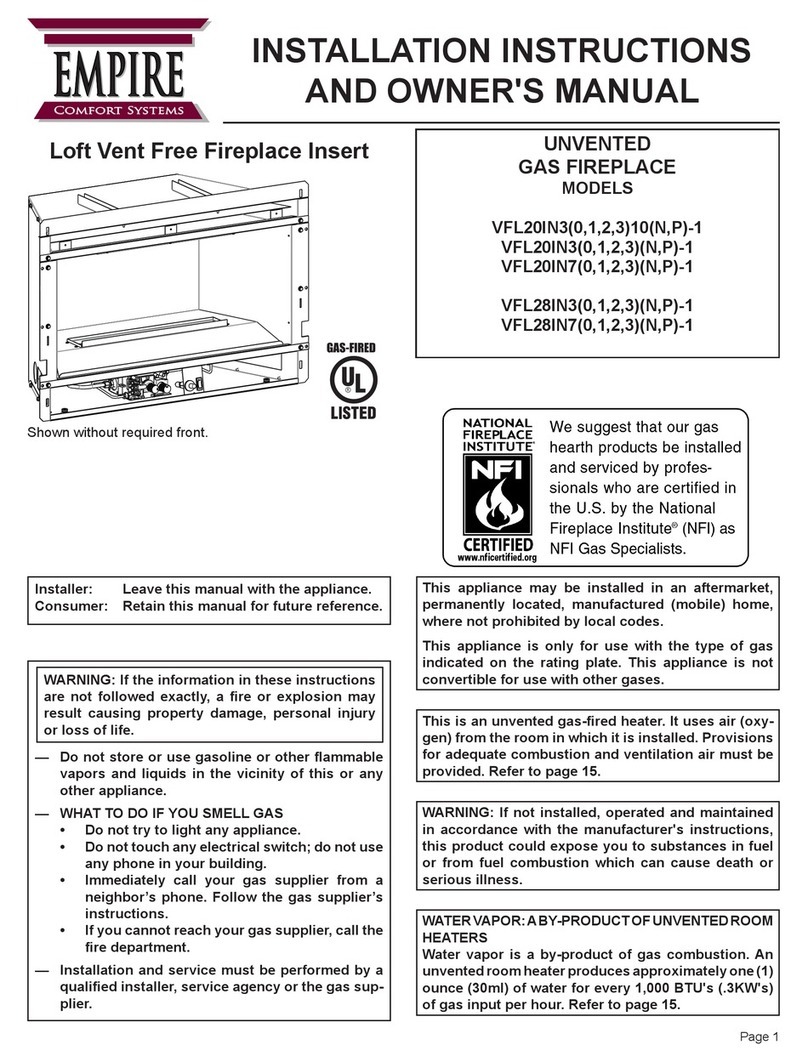
Empire Comfort Systems
Empire Comfort Systems VFL20IN3 series User manual

Empire Comfort Systems
Empire Comfort Systems DVCT35CBN95N-1 Quick start guide
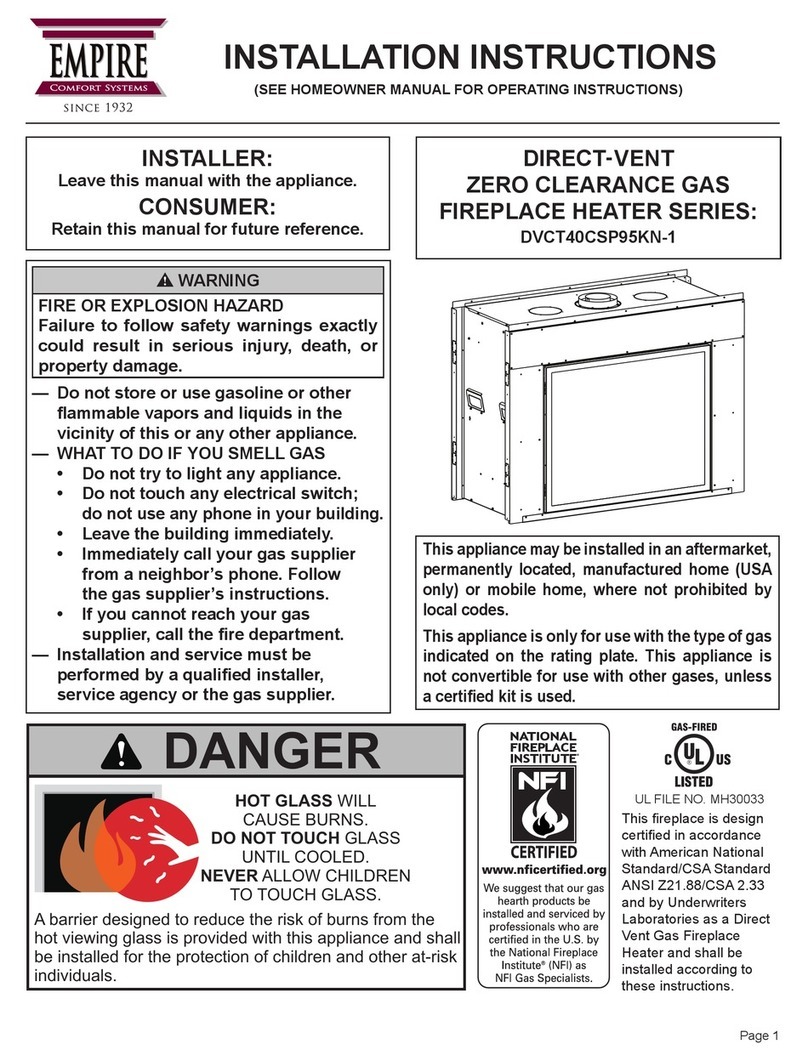
Empire Comfort Systems
Empire Comfort Systems DVCT40CSP95KN-1 Series User manual

Empire Comfort Systems
Empire Comfort Systems DVP36FP30N-5 Quick start guide
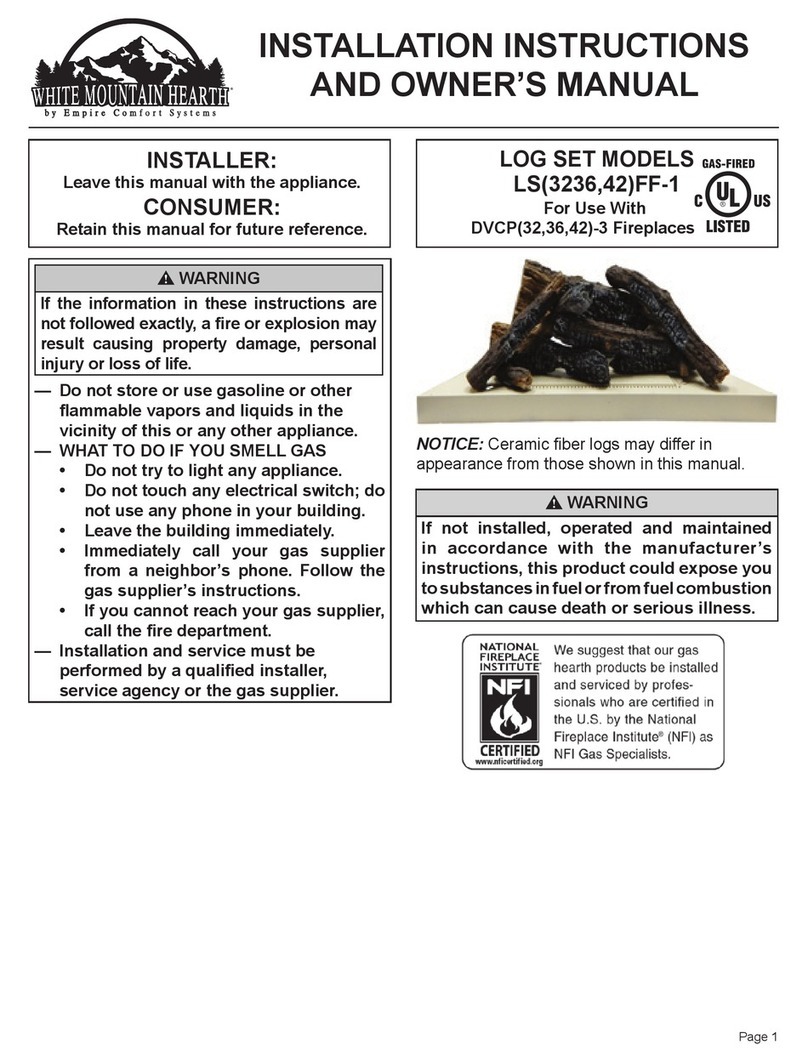
Empire Comfort Systems
Empire Comfort Systems WHITE MOUNTAIN HEARTH DVCP32-3 Quick start guide
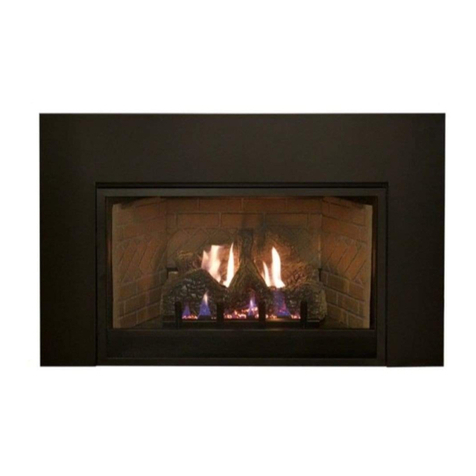
Empire Comfort Systems
Empire Comfort Systems VFPC20in33N-1 Quick start guide
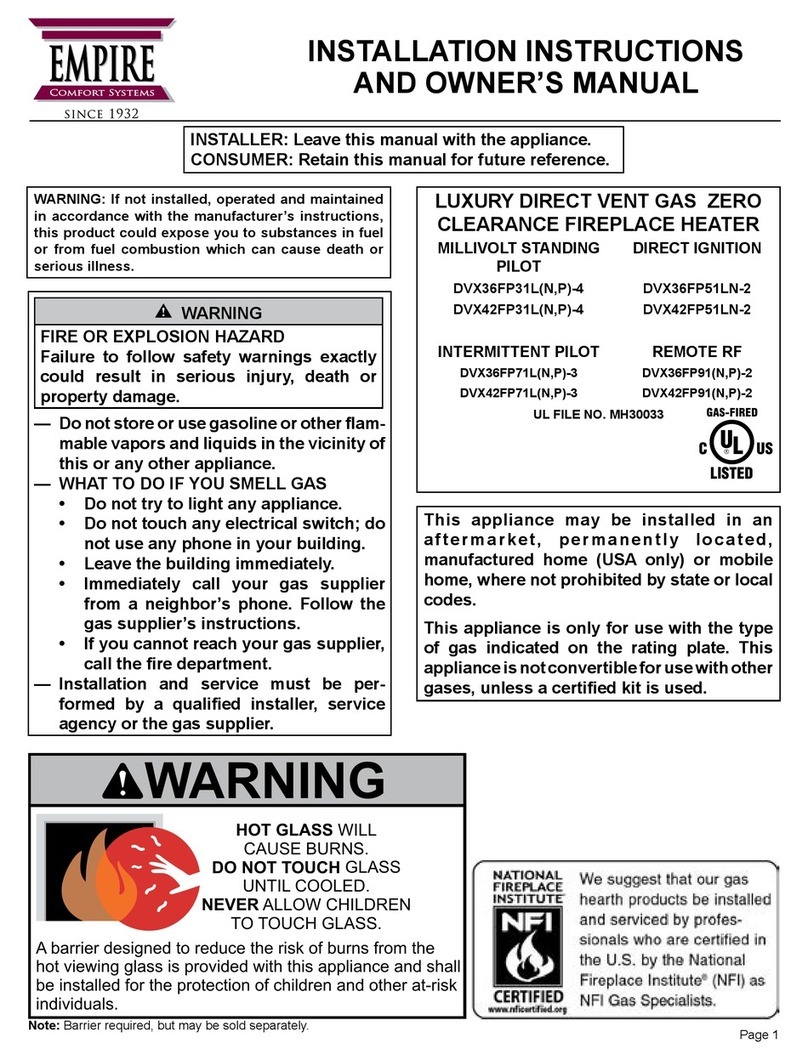
Empire Comfort Systems
Empire Comfort Systems MILLIVOLT STANDING PILOT DVX36FP31LN-4 Quick start guide
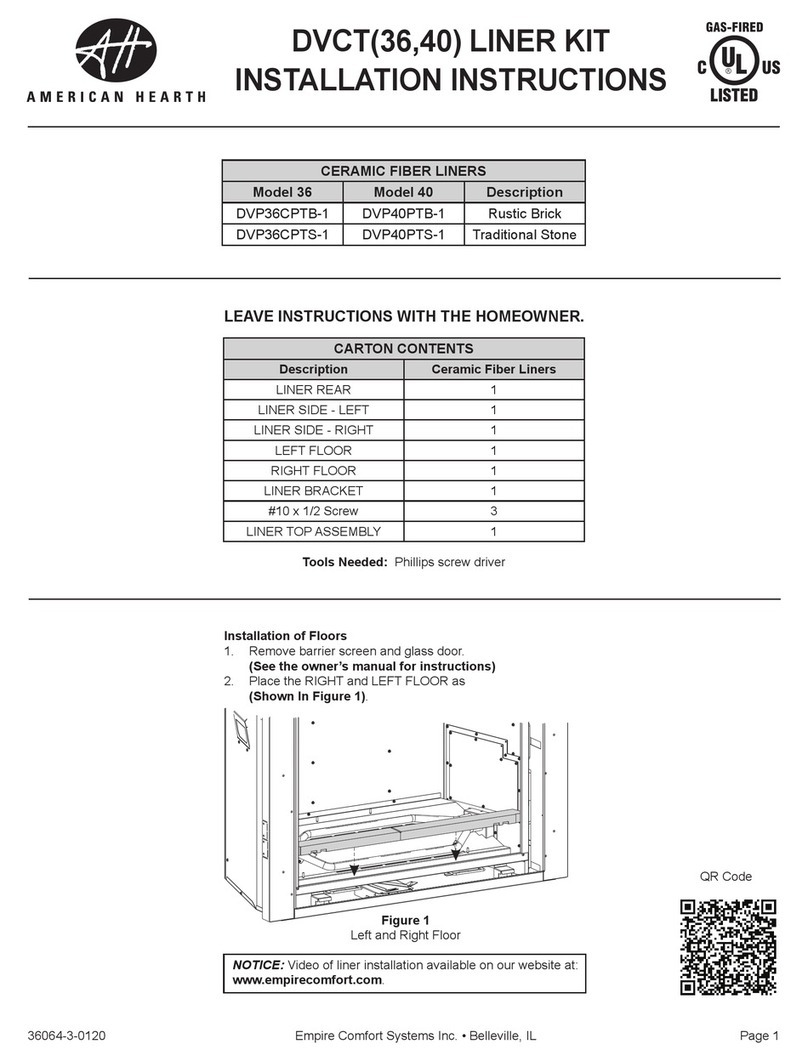
Empire Comfort Systems
Empire Comfort Systems American Hearth DVCT 36 Series User manual
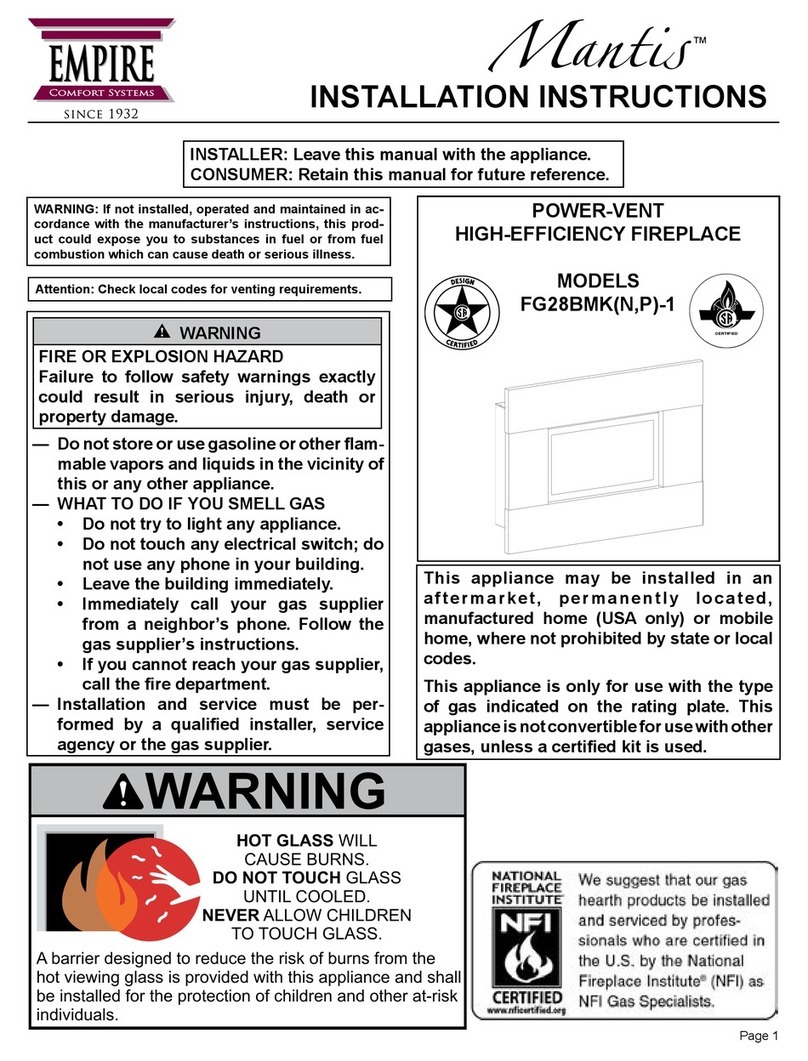
Empire Comfort Systems
Empire Comfort Systems FG28BMK(N User manual

Empire Comfort Systems
Empire Comfort Systems MILLIVOLT DVD32FP30N-3 User manual
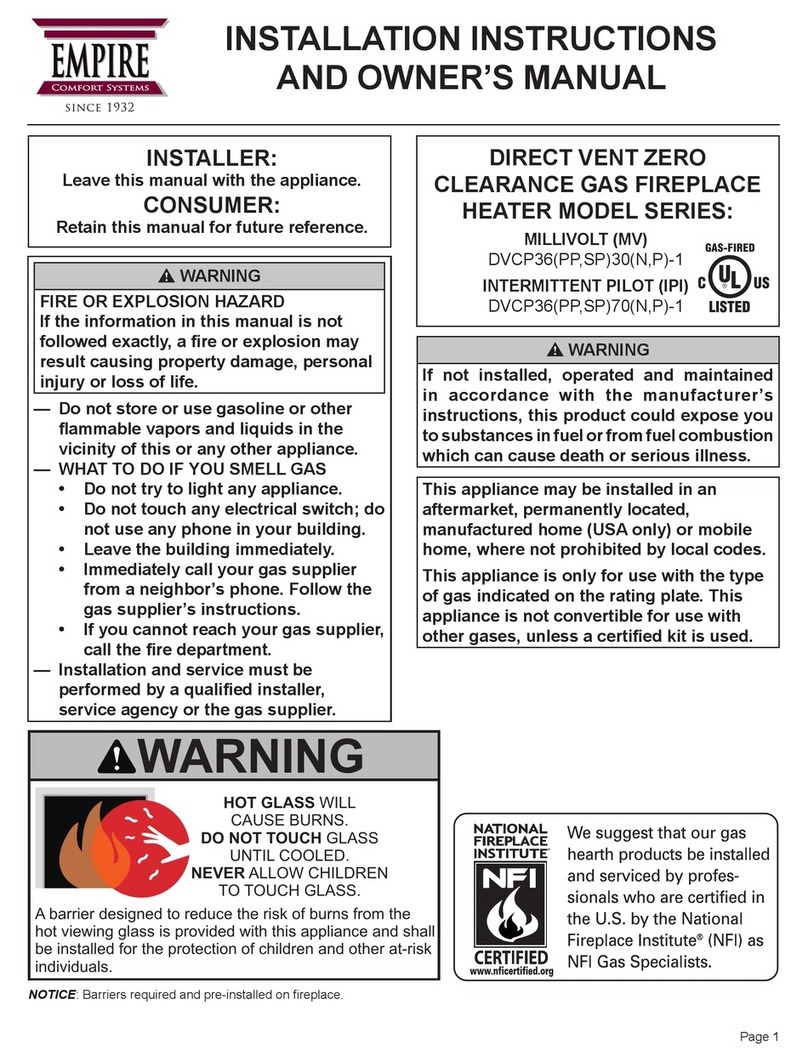
Empire Comfort Systems
Empire Comfort Systems MILLIVOLT DVCP36SP30N-1 Quick start guide
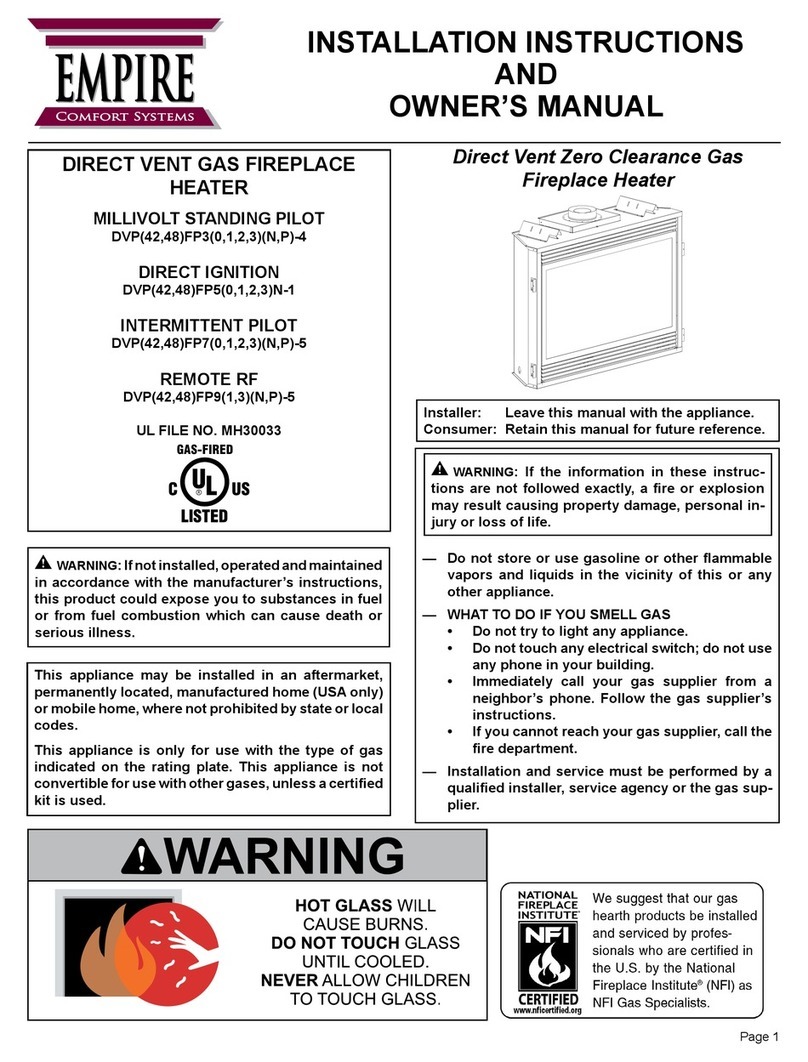
Empire Comfort Systems
Empire Comfort Systems DVP42 Series Quick start guide
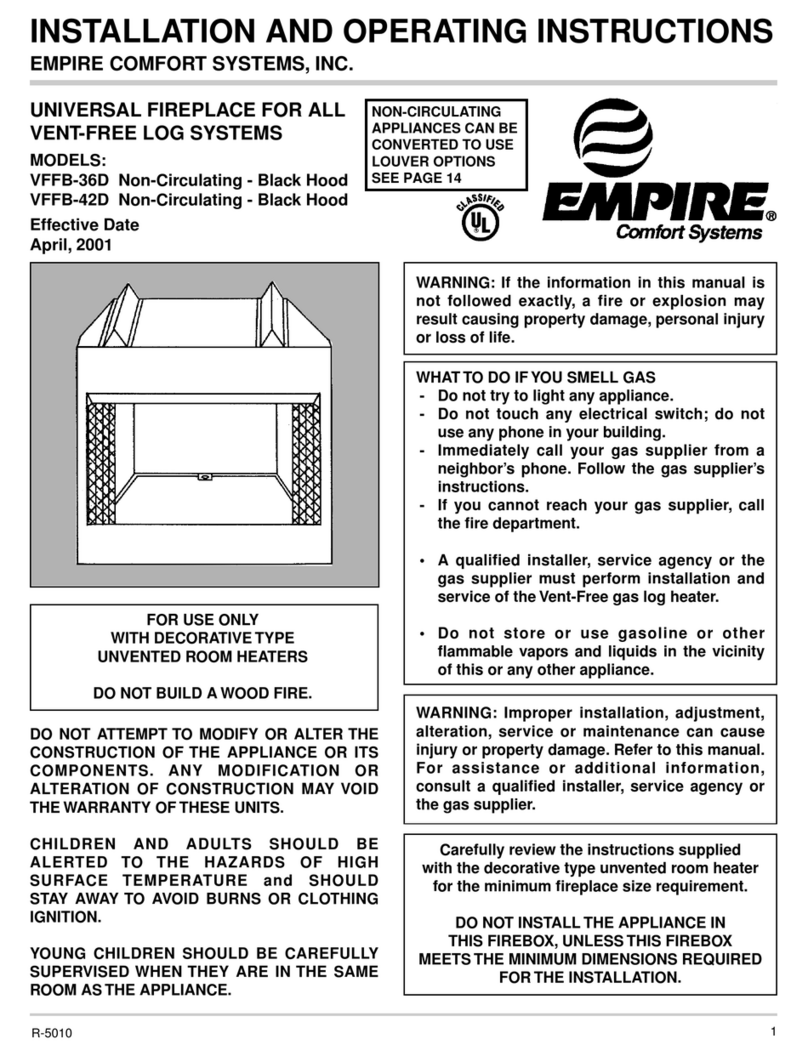
Empire Comfort Systems
Empire Comfort Systems VFFB-36D User manual

Empire Comfort Systems
Empire Comfort Systems DVX36FP32CLN-2 Quick start guide
Popular Indoor Fireplace manuals by other brands

Napoleon
Napoleon NEFL42CHD-1 manual

Masport
Masport WOOD FIRE installation guide

JAYLINE
JAYLINE SS280 Installation & operation instructions

Heat-N-Glo
Heat-N-Glo SL-32S Installation

kozy heat
kozy heat Bellingham 52 quick start guide

Paragon Fires
Paragon Fires ROOM SEALED INSET LIVE FUEL EFFECT GAS FIRE owner's manual

Monessen Hearth
Monessen Hearth LCUF32CR-B Installation & owner's manual

PuraFlame
PuraFlame Galena owner's manual

Dimplex
Dimplex Toluca Deluxe instruction manual

SEI
SEI TENNYSON FA8544AO Assembly instructions

Dru
Dru G25 installation manual

Capital fireplaces
Capital fireplaces Designline DL700 Installation and user instructions

IronStrike
IronStrike VINTAGE VINT-DVS-U Installation and operation

ACR Heat
ACR Heat HERITAGE N25 Installation and operating instruction manual

European Home
European Home HVF-42 Installation, operation and owner's manual

Quadra-Fire
Quadra-Fire MTVERNINSAE-MBK Owner's manual operation & care

Harman Home Heating
Harman Home Heating Accentra Insert Installation & operating manual

Trimline Fires
Trimline Fires Zircon 1024 installation instructions









